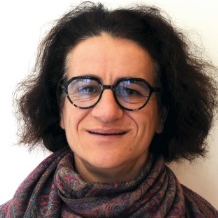Heterochromatin and Tumorigenesis
A special issue of Cells (ISSN 2073-4409). This special issue belongs to the section "Cellular Pathology".
Deadline for manuscript submissions: closed (30 June 2022) | Viewed by 7230
Special Issue Editor
Interests: chromatin; heterochromatin; cancer; HP1; senescence; transcriptional regulation; retrotransposons
Special Issues, Collections and Topics in MDPI journals
Special Issue Information
Dear Colleagues,
Heterochromatin, the “dark side” of the genome, has long been considered an inert storage site for useless DNA sequences; however, there is increasing evidence that this chromatin compartment is essential for many nuclear functions, including chromosome segregation, regulation of gene expression and of DNA replication, and repair. Heterochromatin, which is mainly composed of repetitive sequences including retrotransposons, is characterized by a high level of compaction, an enrichment of the histone mark H3K9me3 and of the chromatin associated proteins HP1 (Heterochromatin Protein 1), and an extremely limited level of transcriptional activity. Many studies have shown that changing the equilibrium of the different heterochromatin components has devastating consequences in particular in the development of cancers. Several lines of evidence support the view that heterochromatin could prevent tumor development by promoting cellular senescence and by silencing retrotransposon activity. A better understanding of how heterochromatin is acting in regulating tumor development is an exciting and particularly active field of research.
This Special Issue aims at summarizing the current knowledge regarding the role of heterochromatin in cancer development and how targeting components essential for its establishment and/or maintenance could lead to therapeutic breakthroughs for cancer treatment.
Dr. Florence Cammas
Guest Editor
Manuscript Submission Information
Manuscripts should be submitted online at www.mdpi.com by registering and logging in to this website. Once you are registered, click here to go to the submission form. Manuscripts can be submitted until the deadline. All submissions that pass pre-check are peer-reviewed. Accepted papers will be published continuously in the journal (as soon as accepted) and will be listed together on the special issue website. Research articles, review articles as well as short communications are invited. For planned papers, a title and short abstract (about 100 words) can be sent to the Editorial Office for announcement on this website.
Submitted manuscripts should not have been published previously, nor be under consideration for publication elsewhere (except conference proceedings papers). All manuscripts are thoroughly refereed through a single-blind peer-review process. A guide for authors and other relevant information for submission of manuscripts is available on the Instructions for Authors page. Cells is an international peer-reviewed open access semimonthly journal published by MDPI.
Please visit the Instructions for Authors page before submitting a manuscript. The Article Processing Charge (APC) for publication in this open access journal is 2700 CHF (Swiss Francs). Submitted papers should be well formatted and use good English. Authors may use MDPI's English editing service prior to publication or during author revisions.
Keywords
- heterochromatin
- cancer
- nuclear organization
- transcriptional silencing
- retrotransposons






